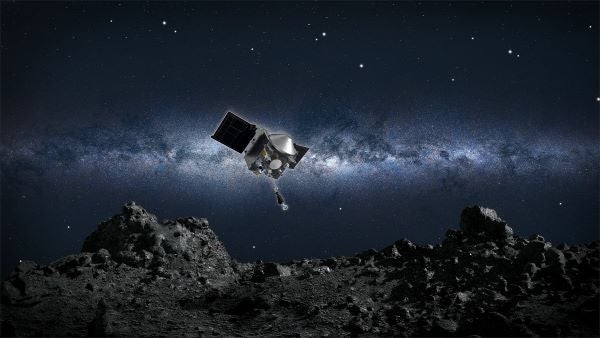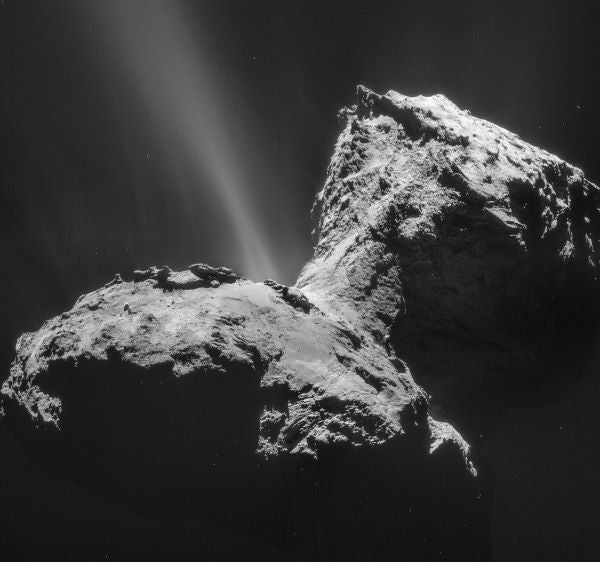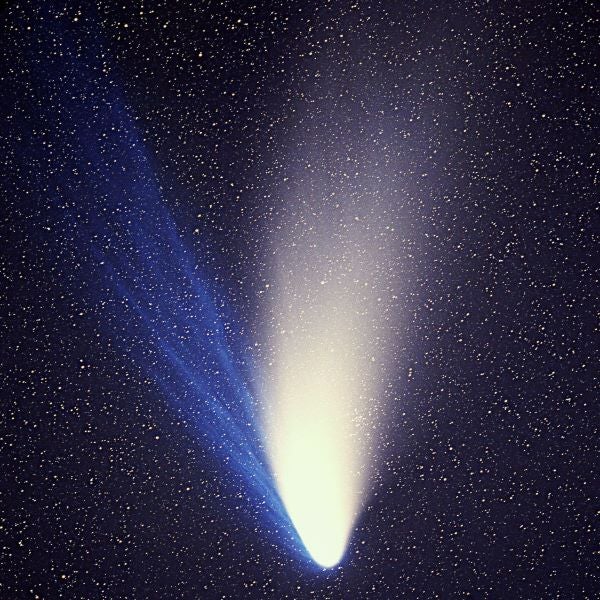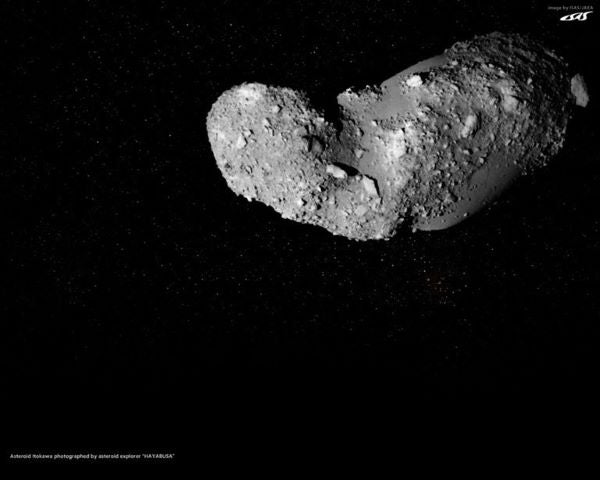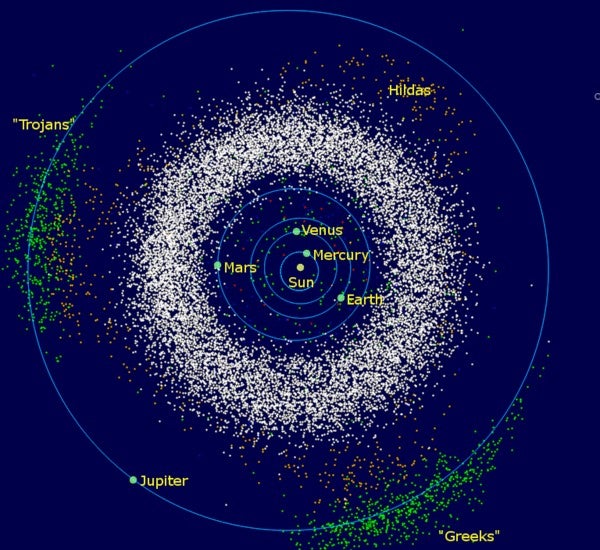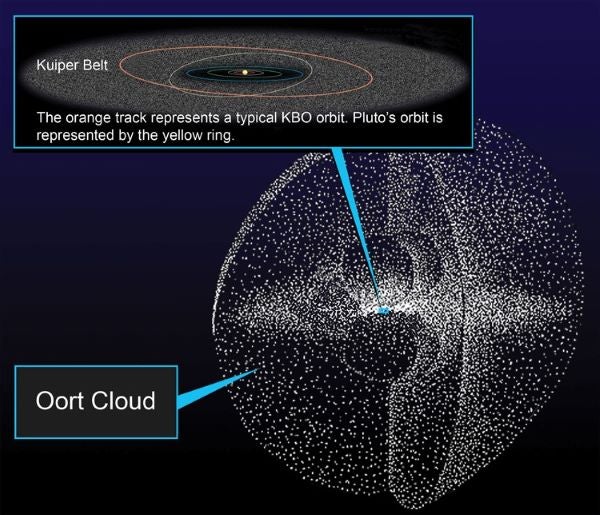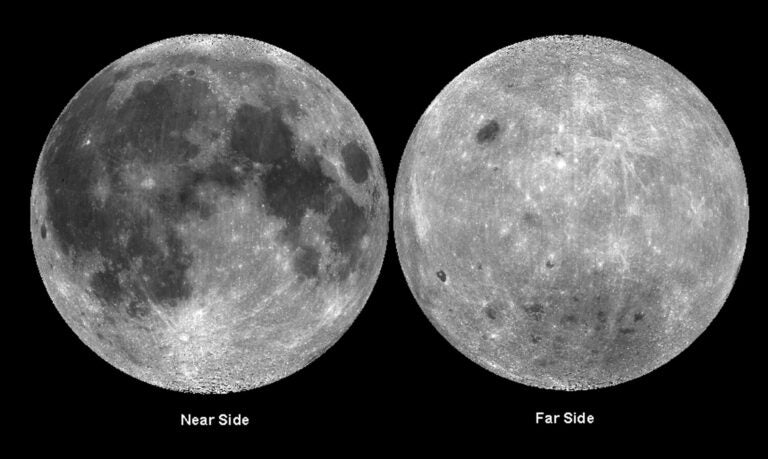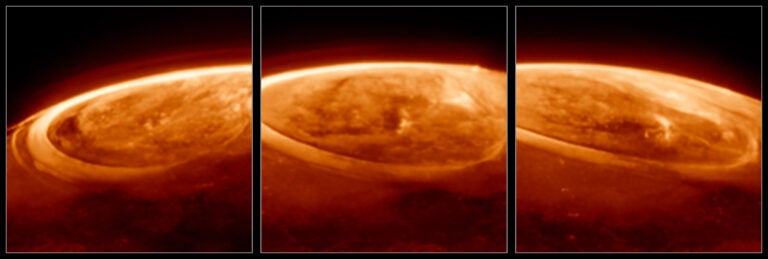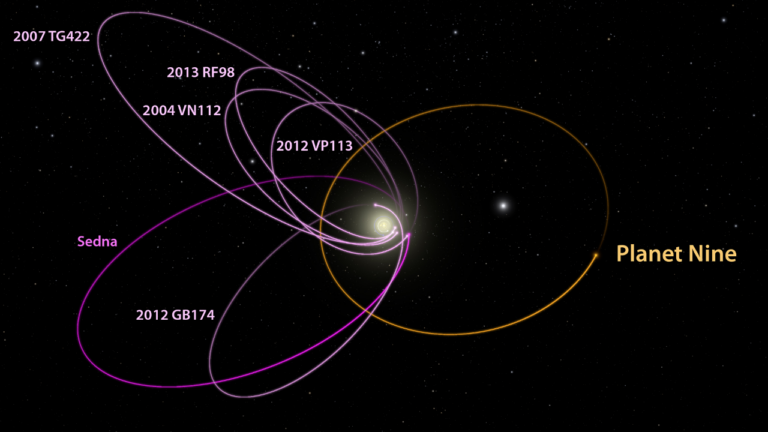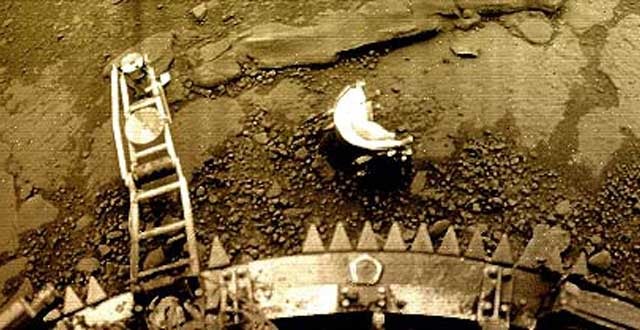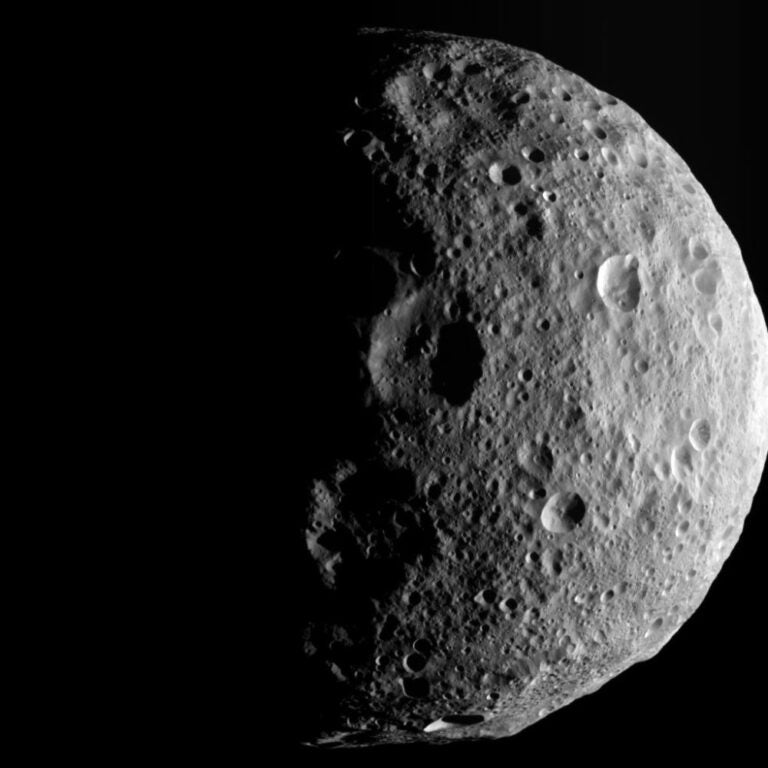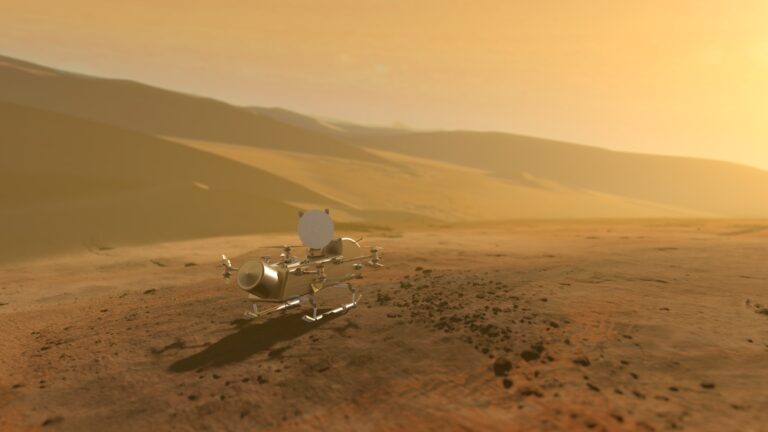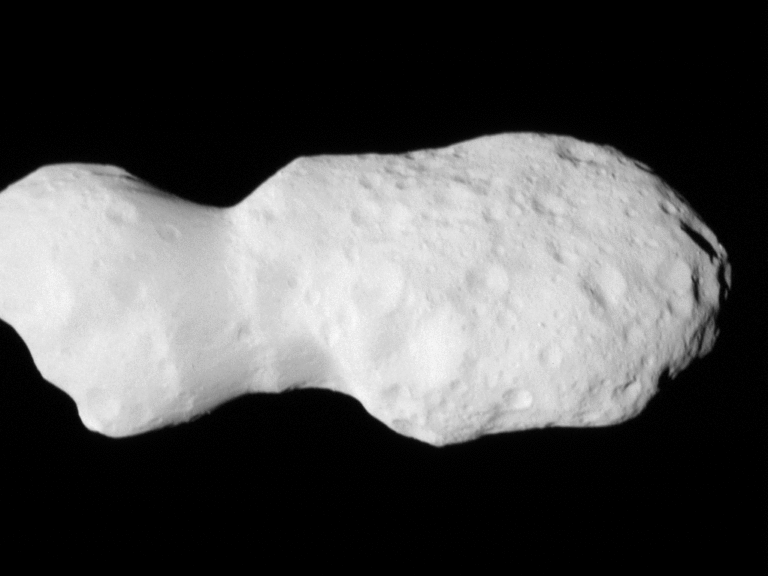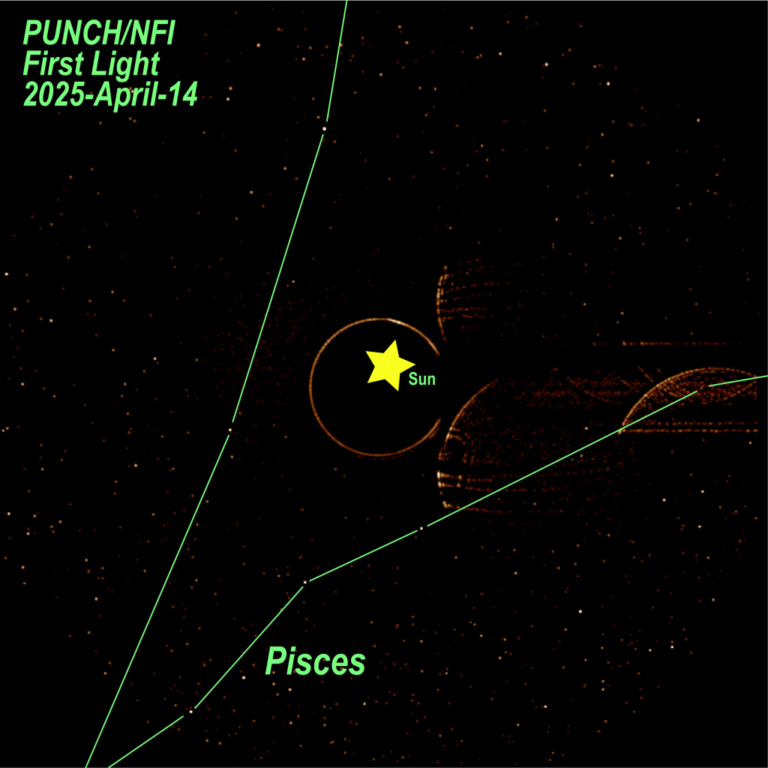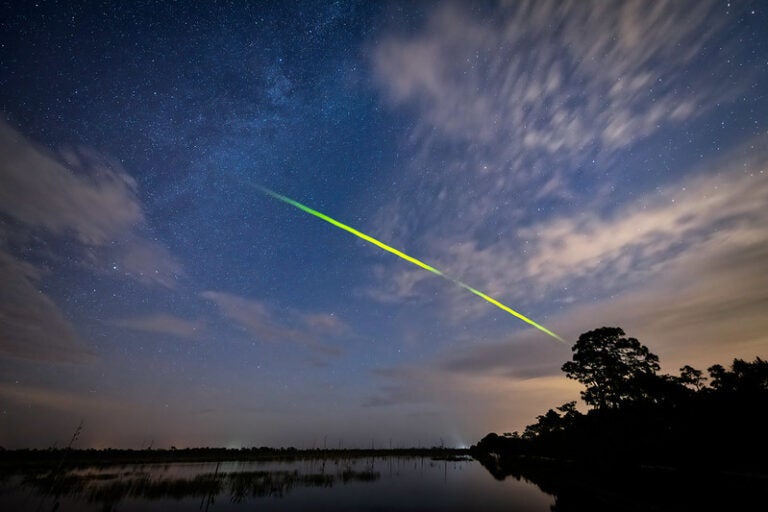It’s easy to overlook asteroids like Bennu and their more rarely seen icy cousins, comets. These tiny leftovers from the solar system’s creation lack the magnificence of ringed Saturn or the astrobiological potential of chilly Mars. But within them sits the story of our genesis, of planetary assembly and the subsequent delivery of water and organics to the nascent Earth.
A NASA video imagines what OSIRIS-REx might see it as descends toward the 500-meter-wide, diamond-shaped asteroid Bennu.
NASA, OSIRIS-REX, NASA’S SCIENTIFIC VISUALIZATION STUDIO
In recognition of that, recent years have brought a surge of small-body exploration, producing findings that have both illuminated and challenged traditional models of our solar system’s birth. Researchers are using the new data to tackle questions among the most long-standing in the human mind: Where does our world come from? How did living things originate? Is there life elsewhere in the cosmos?
More information is set to appear soon. In addition to OSIRIS-REx, the Japanese mission Hayabusa2 expects to deliver to Earth its own specimens from an asteroid named 162173 Ryugu before the end of 2020. Surprising discoveries are still coming from the European Space Agency’s Rosetta orbiter, which flew around the comet 67P/Churyumov–Gerasimenko from 2014 to 2016, mapping its icy nucleus and dropping a small lander on its surface. Upcoming missions will head to never-before-seen places like a mostly metal asteroid and some of the oldest entities in the solar system, offering possible new insights into planetary evolution.
All of this effort is helping to show that, far from being unimportant, asteroids, comets and other small bodies are key players in our history. Through them, we can gaze across time and space, back to the dawn of the Sun and out to distant star systems still being formed.
Cosmic origins
Only relatively recently have scientists begun to mine comets and asteroids for the clues they offer to the solar system’s history. The age of small-body exploration began in 1986, when an international fleet of robotic spacecraft encountered the famous Halley’s comet as it made its most recent pass by the Sun. Observations of Halley began to focus much more deserved attention on the long-neglected smaller bodies of the solar system.
“They’ve been overlooked as if they’re bread crumbs and what the world is about is the bread,” says planetary scientist Lindy Elkins-Tanton of Arizona State University in Tempe. “But they all have their own stories to tell.”
Those stories have already begun to complicate the simplest pictures of the origins of life, the Earth and the solar system. Probes of Halley, for instance, showed that the comet contained a large number of organic molecules, suggesting that at least some of the basic ingredients of life had been around since before our world existed. Earth-based instruments had previously detected only relatively simple molecules such as carbon dioxide, cyanide and hydroxide in comets as they passed by our planet.
Such findings enrich scientist’s standard account of the solar system’s formation, in which a gigantic cloud of gas and dust collapsed into a swirling disk 4.5 billion years ago. (That collapse was possibly triggered by a shock wave from a nearby supernova explosion, which might have swept through our local region of space and destabilized the gas and dust cloud.) Gravity compacted and warmed the disk’s center, forming a sphere with enough internal pressure to kick off fusion reactions and ignite the early Sun. Matter farther out clumped together and collided, forming larger objects.
Parts of the disk closest to the protostar were heated and lost most of their water; the remaining material coalesced into rocky planets (including the Earth) and stony asteroids. Ices, made of water, ammonium ion and methane, remained in the frozen outer regions, eventually being incorporated into snowy comets and larger planets.
Since Halley, various other missions have indicated the need to further revise this basic picture of our origins. In 2006, for example, NASA’s Stardust spacecraft delivered microscopic dust grains gathered from the atmosphere of comet Wild 2 to researchers on Earth. Cometary scientists expected Wild 2 to contain mainly interstellar material preserved from before the Sun was born, since icy comets are thought to have formed in the distant reaches of the solar system, untouched by our central star’s fiery influence. Those comets should therefore contain some of the most pristine and primitive samples in the solar system.
But when analyzed, all grains a micrometer and larger turned out to have chemical signatures suggesting they formed inside the solar system after the Sun’s birth. Rocky fragments found in the samples could have been created only close to the Sun at temperatures exceeding a blistering 1,700 degrees Celsius.
New details about the Earth’s formation have come from ESA’s more recent Rosetta mission to comet 67P/Churyumov–Gerasimenko. Comets are thought to have delivered material to our world after its formation. But just how much earthly matter originated in comets has been a long-standing mystery.
Rosetta detected forms of the element xenon on the comet in proportions that closely match our planet’s early atmosphere, allowing researchers to calculate that 22 percent of the Earth’s xenon probably came from comet impacts. Knowing how much xenon there is in the Earth’s atmosphere and how much is present on an average comet suggests that around 100,000 comets hit our world early on, bringing not just xenon but also a fraction of the water and a great deal of the organics on our world.
One of Rosetta’s biggest surprises was the detection of relatively large amounts of molecular oxygen, O2. That highly reactive substance has never been found in distant protoplanetary disks. Its reactive nature means it readily breaks down and forms bonds with other atoms. Nobody can yet explain its presence in comet 67P, but one implication is that perhaps some of the oxygen we breathe came to the planet with comets.
Rosetta also has provided tantalizing clues about the origin of life. Phosphorus, an element required for building DNA and many other biomolecules, is present in the Earth’s crust but is usually locked away in minerals, making it inaccessible for organic chemistry — and living things. The bulk of comet 67P’s phosphorus is in the form of phosphorus monoxide, a water-soluble molecule that living organisms could incorporate much more easily than mineral phosphorus. The probe also detected the amino acid glycine, as well as ammonium salts, in the comet’s atmosphere, hinting at the nature of the warm, wet ponds that might have formed when a water-filled comet struck a planet.
“You’re going to bring in the salts and other prebiotic compounds,” says astrobiologist Michael Mumma of NASA’s Goddard Spaceflight Center. “They’re all going to run together and deliver a primordial soup that could be in the middle of a desert, or in the mountains, or anywhere.”
If such life-cultivating processes were happening on Earth, they were certainly occurring on early Mars, Venus and the rocky moons of the outer planets. Furthermore, the two recently discovered interstellar comets to pass through our solar system, ‘Oumuamua and 2I/Borisov, have properties quite similar to local bodies, hinting at cosmic connections between our planet and others in the galaxy.
Scientists’ estimation of the chance that there is life out there “has probably grown because of comet research,” says planetary scientist Kathrin Altwegg of the University of Bern in Switzerland, who leads Rosina, a mission related to Rosetta. She and her colleagues explored current thinking on comets in the Annual Reviews of Astronomy and Astrophysics in 2019.
Rocky starts
While comets’ primeval contents are starting to answer some fundamental questions, their drier cousins, asteroids, provide additional peeks into the solar system’s history. Being closer to the Sun, asteroids bear witness to the chaotic pummeling that planets like Earth received during their ancient days.
The asteroid 25143 Itokawa formed around 1.5 billion years ago, birthed after a catastrophic impact knocked the silicon-rich body off a larger mass. That was the implication of mineral data from the Japanese space agency’s Hayabusa probe, which visited and sampled that skyscraper-sized body (described by team members as resembling a sea otter) in 2005. But the asteroid did not contain substantial amounts of water or organics, and so had little to say directly about the origins of life on our planet.
Japan followed up the mission with Hayabusa2, which arrived two years ago at the dark carbon-rich asteroid Ryugu. The top-shaped asteroid is thought to have originated in the main asteroid belt between Mars and Jupiter but now orbits much closer to Earth. The sequel spacecraft deployed three successful rovers that hopped over the asteroid’s boulder-rich exterior. It also fired a projectile to create a crater from which subsurface samples could be drawn. Initial observations from Hayabusa2 show large amounts of material produced when solar radiation interacted with the asteroid’s outer layers. This finding indicated that, at some point in the past, it must have taken an excursion near the Sun.
The idea that the body could have made such a complex journey over its lifetime, and that researchers might be able to piece this together from simple surface measurements, was unimaginable before the mission reached its target, says planetary scientist Seiji Sugita of the University of Tokyo in Japan, who oversees Hayabusa2’s navigational cameras.
Investigations of Ryugu have been going on in tandem with OSIRIS-REx’s explorations of the dark, diamond-shaped Bennu. At the start of these visits, the two bodies were thought to have distinct origins, especially since Bennu was found to be far more water-rich than Ryugu. But recent simulations have shown how the two similar-looking asteroids could have been birthed from the same energetic collision roughly a billion years ago. Ryugu’s drier composition also favors the idea that it once sojourned close to the Sun.
Infrared images of the boulders on both asteroids have revealed another unexpected outcome — these rocks are highly porous.
“My guess is they would float like pumice and if you touch them they would just disintegrate,” says planetary scientist Harold Levison of the Southwest Research Institute in Boulder, Colorado. The discovery helps explain processes in the primordial disk, when dust grains first began sticking together into larger agglomerations. The foamy stones were probably created by slow churning, arising like clumps in a bag of flour, Levison says. Though not entirely shocking, the finding indicates that the initial bodies in the solar system probably formed in a low-energy environment.
A recent slew of papers from the OSIRIS-REx team have shown that Bennu is covered in carbon-rich material and contains rocks probably too weak to survive a fiery plummet through Earth’s atmosphere. If so, samples gathered by the spacecraft will be unique and not already present in meteorite collections on our planet. The rocks also reveal Bennu to be a Frankenstein body, with at least two separate boulder populations that probably originated from geologically distinct regions of its parent body.
But the biggest surprises are yet to come, when Hayabusa2 and OSIRIS-REx’s samples make it back to laboratories on Earth. Researchers will then be able to perform much more rigorous and detailed analyses of both asteroids’ components than can be done by spacecraft. OSIRIS-REx principal investigator Dante Lauretta says he is particularly interested in studying the small bodies’ organic material.
Terrestrial meteorites, which break off asteroids or other bodies and fall to our planet, are almost immediately contaminated by native organisms. Even for examples that are collected quickly, like the famous Murchison meteorite that crashed into Australia in 1969, scientists lack important contextual information about precisely where they came from. Because of the extensive mapping of Ryugu and Bennu, researchers will have a significant leg up in drawing conclusions about solar system formation and life’s origins from their extractions.
Future surprises
Scientists are also looking forward to two forthcoming NASA missions — designated Lucy and Psyche — that will provide data bookending the start and finish of planetary evolution. Lucy is set to launch next year, eventually to tour past at least six asteroids that share Jupiter’s orbit around the Sun. Known as Trojans, these small traveling companions are so diverse in their properties that scientists think they probably have separate origins.
Levison, the mission’s principal investigator, hopes to find evidence for a theory he helped develop called the Nice model. It posits that early in the solar system’s history, gravitational instabilities caused Jupiter and Saturn to move inward over the course of hundreds of thousands or millions of years. This process snagged the Trojans from various places in the primordial disk and knocked the rest of the planets into their present orbits.
In 2022, NASA plans to send the Psyche probe toward an asteroid named 16 Psyche. That small body is thought to be composed of between 30 percent and 60 percent metal, a type of asteroid that no spacecraft has ever seen up close. Scientists are still scratching their heads over how the asteroid formed, with some hypothesizing that it is the exposed core of a former planet that was ground down via a series of cataclysmic wallops. Psyche the spacecraft will investigate the little world, potentially providing important data on the later stages of planetary creation in our solar system.
Our understanding of small bodies will continue to deepen in the foreseeable future, with the European Space Agency recently selecting the Comet Interceptor mission for launch in 2028. The probe will be parked near the Earth as it waits to examine an ancient long-period comet — perhaps from the distant Oort cloud, a collection of the farthest and least changed icy bodies in the solar system.
As pictures of each new asteroid and comet arrive, they invariably show impressive features such as cracks and cliffs and ice-covered craters. Such visuals may open people’s eyes to the beauty inherent in these small worlds, reminding us that fleeting apparitions in the sky like Halley’s comet contain real landscapes with unending surprises to explore.
“You see these images and it feels like you could sit under that big boulder, right there in the shade,” says Elkins-Tanton, who leads the Psyche mission. “We’re creating a human relationship.”
This article is republished from Knowable Magazine under a Creative Commons license. Read the original article.

